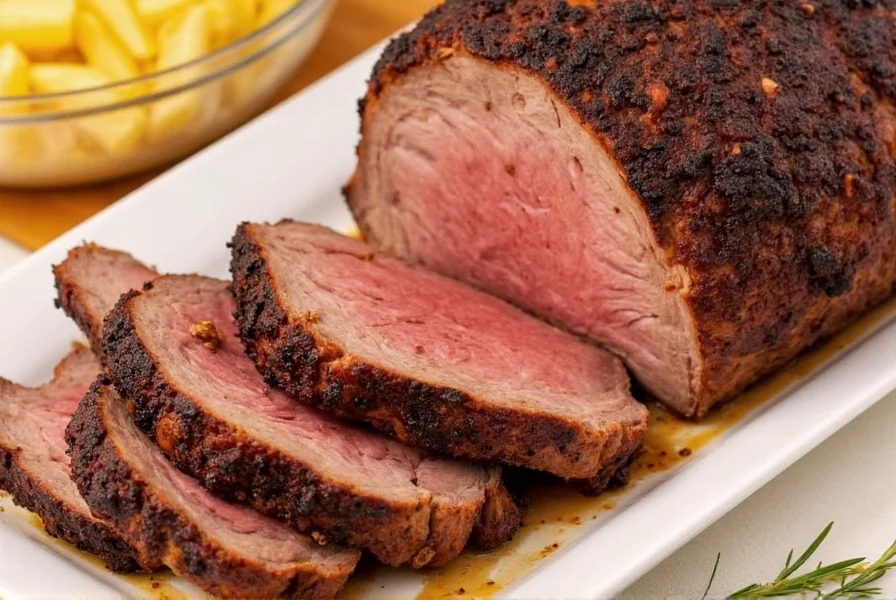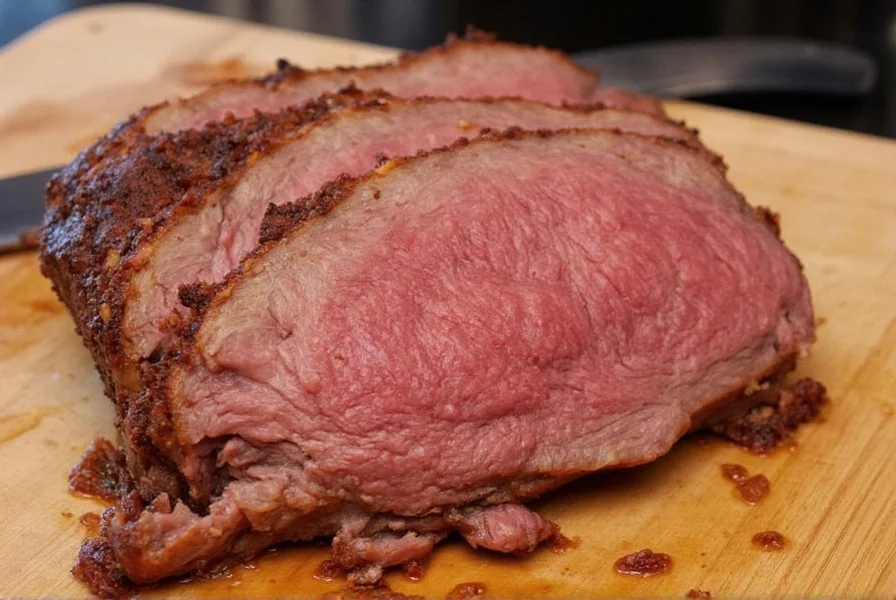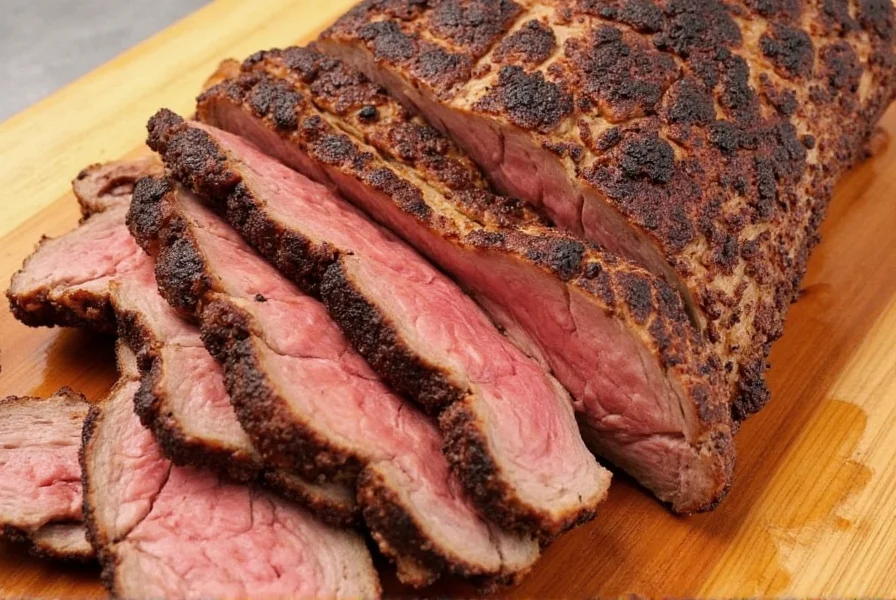Cooking a perfect brisket requires careful preparation, the right spices, and proper cooking techniques. Follow this step-by-step guide to achieve tender, flavorful results every time. Learn how to trim the meat, apply a flavorful rub, cook it low and slow, and rest it properly for the best brisket of your life.
Table of Contents
The Perfect Brisket Process
The brisket comes from the chest area of the cow and is packed with connective tissue. That means raw, it's tough as nails. But when treated right — especially with the right spice blend and cooking method — it becomes fall-apart tender and richly flavorful.
Here's what you need to do: trim excess fat, apply a balanced spice rub, cook low and slow (225-250°F) for 10-14 hours, wrap during the stall phase, rest for 30-120 minutes, then slice against the grain. This process ensures maximum tenderness and flavor.
Spice Basics for Brisket Roasting
| Spice | Flavor Profile | Best For |
|---|---|---|
| Black Pepper | Pungent, earthy, slightly floral | Adding heat and depth |
| Smoked Paprika | Smoky, sweet, slightly peppery | Building a barbecue foundation |
| Brown Sugar | Sweet, caramelized | Creating a crust and balancing salt |
| Cumin | Earthy, nutty, warm | Adding complexity and warmth |
| Garlic Powder | Strong, savory, aromatic | Enhancing meatiness and helping tenderize |
| Onion Powder | Sharp, sweet, pungent | Boosting savoriness and aroma |
| Mustard Powder | Piquant, tangy | Helping the rub adhere and boosting umami |
How to Build the Perfect Brisket Rub

Creating your own rub is easy and rewarding. Here's a simple formula to follow:
Basic Brisket Rub Recipe
- 2 tbsp coarse black pepper
- 2 tbsp smoked paprika
- 1 tbsp brown sugar
- 1 tbsp cumin
- 1 tsp garlic powder
- 1 tsp onion powder
- ½ tsp mustard powder
Mix everything together in a bowl, then generously apply it to all sides of the brisket. Let it sit in the fridge overnight for maximum flavor penetration.
Tips for Applying the Rub
- Pat the brisket dry before applying the rub — this helps it stick better.
- Rub in circular motions to help the spices penetrate the meat.
- If using a marinade, apply the rub first, then add liquid elements.
Cooking Techniques: Low & Slow vs. High Heat
| Method | Pros | Cons | Best For |
|---|---|---|---|
| Low & Slow (225–250°F) | Maximizes tenderness, builds deep flavor, renders fat beautifully | Takes 10+ hours, requires patience | Weekend cookouts, serious BBQ lovers |
| High Heat (350°F+) | Reduces cooking time, develops nice crust | Meat can become dry, less tender | Busy weeknights, oven roasts |
For best results, start with low and slow, and finish with a short burst of higher heat to develop color and texture.
Buying Guide: Tools and Products You’ll Need

Whether you're a weekend warrior or a seasoned pitmaster, having the right gear makes all the difference. Here are our top picks for brisket roasting essentials:
1. Digital Meat Thermometer
Product: Thermapen ONE
Alt Text: Digital meat thermometer
- Features: Instant-read, waterproof, backlit display
- Use Case: Monitoring internal temp without guesswork
- Target Audience: Anyone serious about meat
- Occasion: Everyday grilling, competitive BBQ
2. Smoker Box or Pellet Grill
Product: Weber Smokey Mountain Cooker
Alt Text: Weber Smokey Mountain smoker
- Features: Consistent heat, dual vents, porcelain-enameled steel
- Use Case: Low-and-slow smoking with precision
- Target Audience: Barbecue enthusiasts
- Occasion: Weekend cookouts, family gatherings
3. Spice Grinder
Product: KRUPS F203 Electric Spice & Nut Mill
Alt Text: Electric spice grinder
- Features: Fast grinding, compact size
- Use Case: Making custom spice blends
- Target Audience: Home chefs and spice lovers
- Occasion: Meal prep, recipe experimentation
4. Brisket Injection Syringe
Product: Charcoal Companion Meat Injector
Alt Text: Meat injection syringe
- Features: Large capacity, stainless steel construction
- Use Case: Infusing flavors directly into the meat
- Target Audience: Advanced cooks and BBQ competitors
- Occasion: Competition-level brisket, holiday meals
5. Aluminum Foil or Butcher Paper
Product: Reynolds Wrap Heavy Duty Foil
Alt Text: Roll of aluminum foil
- Features: Thick, durable, tear-resistant
- Use Case: Wrapping brisket during the stall phase
- Target Audience: All levels of cooks
- Occasion: Long smokes, temperature control
Frequently Asked Questions
Should I trim the fat off my brisket before seasoning?
Trim about ¼ inch of external fat to allow spices to penetrate while retaining enough for juiciness.
Can I use fresh garlic instead of garlic powder?
You can, but garlic powder distributes more evenly and won't burn as easily during long cooks.
What's the ideal internal temperature for brisket?
Between 195-205°F for maximum tenderness and flavor release.
How long should I let the brisket rest after cooking?
Rest for at least 30 minutes — up to 2 hours — wrapped in foil or paper to keep juices locked in.
How long does it take to cook a brisket?
Cooking time varies based on size and method, but generally allow 1 to 1.5 hours per pound at 225-250°F. A typical 10-12 pound brisket will take 10-14 hours using the low-and-slow method.
What's the difference between point cut and flat cut brisket?
The flat cut is leaner and more uniform in shape, making it easier to slice. The point cut has more fat marbling and connective tissue, resulting in richer flavor but more challenging cooking. Many full briskets include both cuts connected by a layer of fat.
Can I cook brisket in the oven instead of a smoker?
Absolutely! While smoking gives traditional barbecue flavor, you can achieve excellent results in the oven. Use a roasting pan with a rack, add some wood chips to a foil pouch for smoke flavor if desired, and maintain a low temperature (225-250°F) for the duration of cooking.
Conclusion: Master Your Brisket

A perfectly cooked brisket isn't just about timing and temperature — it's about unlocking layers of flavor with the right spices and techniques. Whether you're going for classic Texas-style bark or experimenting with bold global flavors, your preparation sets the stage.
Now that you know the basics and have some pro tips in your pocket, go ahead and experiment. Try swapping out cumin for coriander or adding a touch of chili powder for extra kick. The world of brisket is wide open — and incredibly delicious.
Happy cooking, and may your brisket never be boring again!










 浙公网安备
33010002000092号
浙公网安备
33010002000092号 浙B2-20120091-4
浙B2-20120091-4